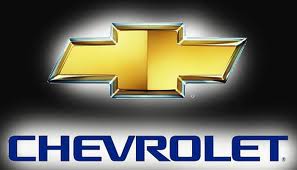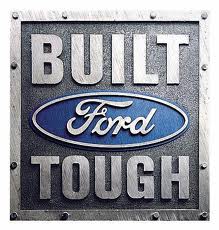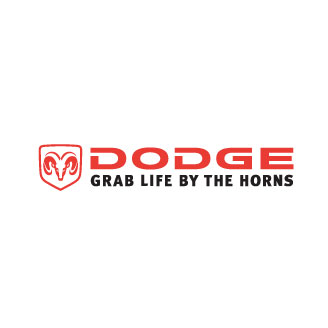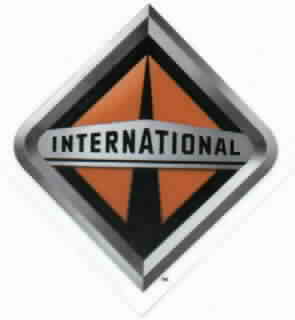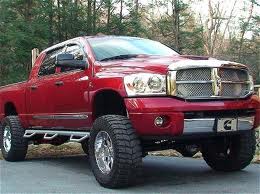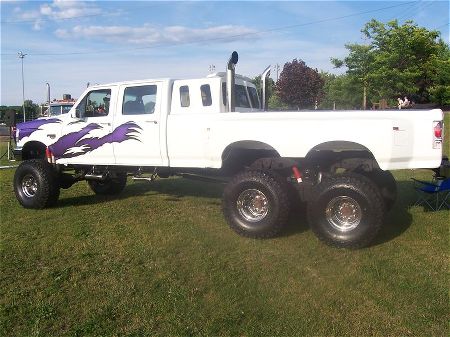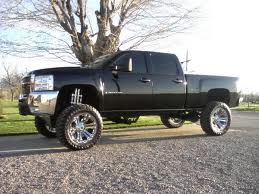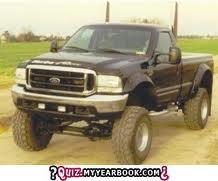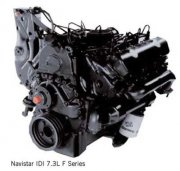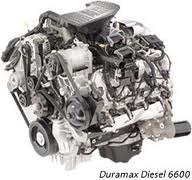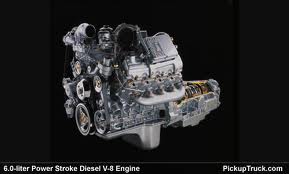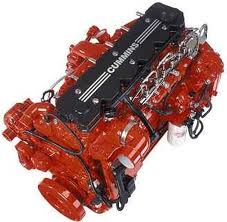The History of the four most popular diesel engines
The History of The Famous Diesel Engines
The History of the International diesel
As a result of the gas crises of the 1970s, big-block gasoline V8 engines (such as the Ford 460) had begun to fall out of favor with pickup-truck buyers. In the 1980s, diesel engines (introduced by General Motors in 1978) had become popular, as they offered the power of a big-block V8 with the fuel economy of a small-block V8 (if not a six-cylinder). Unlike GM, which developed its own diesel engine (from subsidiary Detroit Diesel), Ford kept down development costs by adapting an existing engine. Ford entered into a supply agreement with International Harvester to receive its 6.9L IDI V8 engine. The first diesel-powered Ford pickup trucks (all ¾ and 1-ton models) debuted for 1982.In 1994, when the IDI V8 was replaced by the T444E, the diesel option was branded "Ford PowerStroke" to emphasize the switch to direct injection. Throughout the 1990s and 2000s, Ford offered International/Navistar V8 (as the DT inline-6 was far too large to package in a pickup truck) in the Ford Super Duty pickup trucks.
The International Harvester IDI (from Indirect Injection) engine is a 4-stroke V-8 Diesel engine used in International trucks and Ford F-Series pickups from 1982 to 1994. The engine had two displacements: 420 cubic inches (6.9 litres), which was used in Ford trucks from 1983 to 1987, and 444 cubic inches (7.3 litres), which was used in Ford trucks from 1988 to 1993 (naturally aspirated). The turbo charged version was to be a single year stopgap as production of the new Power Stroke engine was to debut with the 1994 model year. (turbocharged). Production of the 7.3 Turbo IDI engine was extended to mid-year 1994 as the new engine was not ready in time for a full 1994 model year run. The turbo 7.3 was very similar to the previous 6.9l and 7.3l IDI diesel engines. They differed in that the 7.3 IDI Turbo had different wrist pins, piston rings, as well as different flow capacity fuel injectors. Additionally, the fuel injection pump output was slightly increased to compensate for the additional air charge. This engine was replaced in mid 1994 by the Navistar T444E (7.3L) engine. The 6.9 IDI, 7.3 IDI, and 7.3 IDIT engines are not in the Power Stroke family.
The history of the CUMMINS diesel
Founded in Columbus, Indiana, in 1919 as Cummins Engine Company, for its namesake Clessie Lyle Cummins, the fledgling firm was among the first to see the commercial potential of an unproven engine technology invented two decades earlier by Rudolph Diesel.After a decade of fits and starts, in 1933, the company released the Model H, a powerful engine for transportation that launched the company's most successful engine family. J. Irwin Miller, became general manager in 1934 and went on the lead the company to international prominence over the next four decades. By marketing high-quality products through a unique nationwide service organization, the Company earned its first profit in 1937. Three years later, Cummins offered the industry's first 100,000-mile warranty.By the 1950s, America had embarked on a massive interstate highway construction program, with Cummins engines powering much of the equipment that built the roads and thousands of the trucks that began to roll down them. Truckers demanded economy, power, reliability, and durability, and Cummins responded. By the late 1950s, Cummins had sales of over $100 million and a commanding lead in the market for heavy truck diesels.As Cummins continued to grow its business in the United States, the Company also began looking beyond its traditional borders. Cummins opened its first foreign manufacturing facility in Shotts, Scotland, in 1956 and by the end of the 1960s, Cummins had expanded its sales and service network to 2,500 dealers in 98 countries. Today, Cummins has more than 5,000 facilities in 197 countries and territories.Cummins, led by the visionary leadership of J. Irwin Miller, forged strong ties to emerging countries such as China, India and Brazil, where Cummins had a major presence before most other U.S. multinational companies. Cummins has grown into one of the largest engine makers in both China and India, and for the past three years approximately half of the Company’s sales have been generated outside the United States.Cummins was the only company in the industry to meet the 2010 Environmental Protection Agency standards for NOx emissions with the release in early 2007 of its new 6.7-liter turbo diesel for theDodge Ram Heavy Duty pickup.
Founded in Columbus, Indiana, in 1919 as Cummins Engine Company, for its namesake Clessie Lyle Cummins, the fledgling firm was among the first to see the commercial potential of an unproven engine technology invented two decades earlier by Rudolph Diesel.After a decade of fits and starts, in 1933, the company released the Model H, a powerful engine for transportation that launched the company's most successful engine family. J. Irwin Miller, became general manager in 1934 and went on the lead the company to international prominence over the next four decades. By marketing high-quality products through a unique nationwide service organization, the Company earned its first profit in 1937. Three years later, Cummins offered the industry's first 100,000-mile warranty.By the 1950s, America had embarked on a massive interstate highway construction program, with Cummins engines powering much of the equipment that built the roads and thousands of the trucks that began to roll down them. Truckers demanded economy, power, reliability, and durability, and Cummins responded. By the late 1950s, Cummins had sales of over $100 million and a commanding lead in the market for heavy truck diesels.As Cummins continued to grow its business in the United States, the Company also began looking beyond its traditional borders. Cummins opened its first foreign manufacturing facility in Shotts, Scotland, in 1956 and by the end of the 1960s, Cummins had expanded its sales and service network to 2,500 dealers in 98 countries. Today, Cummins has more than 5,000 facilities in 197 countries and territories.Cummins, led by the visionary leadership of J. Irwin Miller, forged strong ties to emerging countries such as China, India and Brazil, where Cummins had a major presence before most other U.S. multinational companies. Cummins has grown into one of the largest engine makers in both China and India, and for the past three years approximately half of the Company’s sales have been generated outside the United States.Cummins was the only company in the industry to meet the 2010 Environmental Protection Agency standards for NOx emissions with the release in early 2007 of its new 6.7-liter turbo diesel for theDodge Ram Heavy Duty pickup.
The history of the DURAMAX diesel
Back in 1996 General Motors was finalizing plans for the next generation of full-size trucks, code named GMT800, and at that time, GM had only 3% market-share for the Diesel Powered HD pick-up truck segment. In order to have a winning truck, GM had to have a winning Diesel powertrain.
At the same time, a small group of stakeholders led by the Planning Group, reviewed proposals from all the possible Diesel engine manufactures for the all new truck. The decision was reached to go with a proposal from one of GM’s partners – ISUZU Motors LTD, recognized worldwide as a leader in Diesel engines. The proposal had been developed as a part of a strategic 90-day study conducted by ISUZU and GM, relative to ISUZU’s role in the GM Global enterprise.
The problem was ISUZU’s plan called for a “Clean Sheet” brand new engine design that would not be ready until 2003 and GM’s new HD pickup truck was going into production in late 2000. GM’s chairman, Jack Smith, met with ISUZU’s chairman Kazuhira Seki in early 1997 and Mr. Seki agreed that ISUZU would find a way to pull ahead the timing to meet GM’s needs. In May 1997, the project team was established under the leadership of Jim Hogan, GM Truck Group, Yoshihiro Tadaki, ISUZU, and myself Jim Kerekes, representing GM Powertrain. The first meeting was held in Pontiac, MI with subsequent meetings being held every 6-8 weeks, alternating between the U.S. and Japan.
The project was code named “B908” (Bridge between U.S. and ISUZU, 90-day study, and 8-cylinders). This would be the first V8 Diesel engine ISUZU ever designed for the U.S. HD pick-up market. ISUZU was responsible for the base engine design and GM was responsible for the integration of the engine into the vehicle.
Due to the aggressive timetable, ISUZU needed assistance with engine development testing and calibration. The GM Powertrain – Romulus Engineering Lab became the center of activity in the U.S. and several of the ISUZU engineers were co-located there.
The first running B908 engines were available in early 1998 in Japan and soon were installed in mule vehicles in the U.S. to begin the final development. The two engineering teams worked very closely together even with the 13 hour time difference. Countless hours were spent on video conferences between the U.S. and Japan. The B908 Team used the 13-hour difference to our advantage. We would have a video conference late in the day U.S. time and review issues and problems with the Japan team. They would work on the issue during their day (our night) and when the U.S. team came in the next morning, we would have another video conference to review the progress, truly 24/7 development.
The ISUZU and GM Engineers soon got to know and learn from each other. The many “face to face” co-ordination meetings that were held became excellent opportunities to exchange cultural experiences. When the meetings were in the U.S. we would try to include an after-work activity, like a softball game or bowling, to give our Japanese colleagues a chance to learn about the U.S. culture. And when the meetings were held in Japan, the U.S. engineers also had the opportunity to experience the Japanese culture. We will never forget the unique dining experiences – sitting on the floor, eating raw fish or the opportunities to express our vocal talents at the Karaoke bars…”I get by with a little help from my friends!” -The Beatles. A few of us had the very special honor of being invited into the Japanese home of one of the ISUZU engineers for a very personal experience of Japanese lifestyle, for example, the eating of uncooked beef dipped in raw egg. (You can only imagine the expression on my wife, Susan’s face!) And after 40 some trips to Japan, I have personally come to respect and honor the Japanese culture and their values of hard work, determination and politeness.
The GM-ISUZU 90-day study established the plan to manufacture the new engine; a joint venture company, 60% owned by ISUZU and 40% by GM. The company was established in September 1998, in Moraine, Ohio. A new 650,000 square foot engine plant was built near the former 6.5 L Diesel Engine plant, and many of the employees were able to transfer to the new joint venture named, DMAX Ltd., signifying the Diesel engine and maximum power, cleanliness and fuel economy.
The totally new engine design was a 6.6L, 90 degree, direct-injection, overhead valve, four-valve-per-cylinder turbocharged Diesel V8 with aluminum high swirl cylinder heads. The electrically controlled common-rail fuel system provided maximum power for each pulse of fuel used and allowed full authority in injection timing and quantity. This combination along with pilot injection resulted in Best-in-Class operating quietness and smoothness typical with similar sized gasoline engines.
The new engine was targeted to meet Best-in-Class-Performance for power and torque. In order to transfer the 300 hp and 520 ft. lbs. of torque to the truck’s wheels, a new 5-speed automatic transmission was developed. The Allison Transmission 1000 series was chosen to complete the winning Powertrain. The B908 Team worked very closely with Allison Transmission Engineering Team to match the performance characteristics of the engine with the transmission.
Then it was time to decide upon the marketing name for the new B908 engine. The previous attempts to introduce Diesel technology in the U.S. by GM had not been very well received by the customer. The name itself was critical as it would compete against Ford’s established “Powerstroke” Diesel engine. So after many meetings and discussions with Chevrolet Truck and GMC’s marketing, the name: Duramax Diesel 6600 was agreed upon. “Duramax” was meant to highlight the durability and reliability of the new engine.
In late 2000 the Duramax Diesel 6600 debuted for the new 2001HD pick-up trucks in only 37 months as the fastest new engine developed by GM Powertrain -at that time. The engine was an immediate success bringing up GM’s market share from 3 percent to 30 percent in the HD Diesel pick-up truck market.
At the same time, a small group of stakeholders led by the Planning Group, reviewed proposals from all the possible Diesel engine manufactures for the all new truck. The decision was reached to go with a proposal from one of GM’s partners – ISUZU Motors LTD, recognized worldwide as a leader in Diesel engines. The proposal had been developed as a part of a strategic 90-day study conducted by ISUZU and GM, relative to ISUZU’s role in the GM Global enterprise.
The problem was ISUZU’s plan called for a “Clean Sheet” brand new engine design that would not be ready until 2003 and GM’s new HD pickup truck was going into production in late 2000. GM’s chairman, Jack Smith, met with ISUZU’s chairman Kazuhira Seki in early 1997 and Mr. Seki agreed that ISUZU would find a way to pull ahead the timing to meet GM’s needs. In May 1997, the project team was established under the leadership of Jim Hogan, GM Truck Group, Yoshihiro Tadaki, ISUZU, and myself Jim Kerekes, representing GM Powertrain. The first meeting was held in Pontiac, MI with subsequent meetings being held every 6-8 weeks, alternating between the U.S. and Japan.
The project was code named “B908” (Bridge between U.S. and ISUZU, 90-day study, and 8-cylinders). This would be the first V8 Diesel engine ISUZU ever designed for the U.S. HD pick-up market. ISUZU was responsible for the base engine design and GM was responsible for the integration of the engine into the vehicle.
Due to the aggressive timetable, ISUZU needed assistance with engine development testing and calibration. The GM Powertrain – Romulus Engineering Lab became the center of activity in the U.S. and several of the ISUZU engineers were co-located there.
The first running B908 engines were available in early 1998 in Japan and soon were installed in mule vehicles in the U.S. to begin the final development. The two engineering teams worked very closely together even with the 13 hour time difference. Countless hours were spent on video conferences between the U.S. and Japan. The B908 Team used the 13-hour difference to our advantage. We would have a video conference late in the day U.S. time and review issues and problems with the Japan team. They would work on the issue during their day (our night) and when the U.S. team came in the next morning, we would have another video conference to review the progress, truly 24/7 development.
The ISUZU and GM Engineers soon got to know and learn from each other. The many “face to face” co-ordination meetings that were held became excellent opportunities to exchange cultural experiences. When the meetings were in the U.S. we would try to include an after-work activity, like a softball game or bowling, to give our Japanese colleagues a chance to learn about the U.S. culture. And when the meetings were held in Japan, the U.S. engineers also had the opportunity to experience the Japanese culture. We will never forget the unique dining experiences – sitting on the floor, eating raw fish or the opportunities to express our vocal talents at the Karaoke bars…”I get by with a little help from my friends!” -The Beatles. A few of us had the very special honor of being invited into the Japanese home of one of the ISUZU engineers for a very personal experience of Japanese lifestyle, for example, the eating of uncooked beef dipped in raw egg. (You can only imagine the expression on my wife, Susan’s face!) And after 40 some trips to Japan, I have personally come to respect and honor the Japanese culture and their values of hard work, determination and politeness.
The GM-ISUZU 90-day study established the plan to manufacture the new engine; a joint venture company, 60% owned by ISUZU and 40% by GM. The company was established in September 1998, in Moraine, Ohio. A new 650,000 square foot engine plant was built near the former 6.5 L Diesel Engine plant, and many of the employees were able to transfer to the new joint venture named, DMAX Ltd., signifying the Diesel engine and maximum power, cleanliness and fuel economy.
The totally new engine design was a 6.6L, 90 degree, direct-injection, overhead valve, four-valve-per-cylinder turbocharged Diesel V8 with aluminum high swirl cylinder heads. The electrically controlled common-rail fuel system provided maximum power for each pulse of fuel used and allowed full authority in injection timing and quantity. This combination along with pilot injection resulted in Best-in-Class operating quietness and smoothness typical with similar sized gasoline engines.
The new engine was targeted to meet Best-in-Class-Performance for power and torque. In order to transfer the 300 hp and 520 ft. lbs. of torque to the truck’s wheels, a new 5-speed automatic transmission was developed. The Allison Transmission 1000 series was chosen to complete the winning Powertrain. The B908 Team worked very closely with Allison Transmission Engineering Team to match the performance characteristics of the engine with the transmission.
Then it was time to decide upon the marketing name for the new B908 engine. The previous attempts to introduce Diesel technology in the U.S. by GM had not been very well received by the customer. The name itself was critical as it would compete against Ford’s established “Powerstroke” Diesel engine. So after many meetings and discussions with Chevrolet Truck and GMC’s marketing, the name: Duramax Diesel 6600 was agreed upon. “Duramax” was meant to highlight the durability and reliability of the new engine.
In late 2000 the Duramax Diesel 6600 debuted for the new 2001HD pick-up trucks in only 37 months as the fastest new engine developed by GM Powertrain -at that time. The engine was an immediate success bringing up GM’s market share from 3 percent to 30 percent in the HD Diesel pick-up truck market.
Ward’s Magazine “10 Best Engines in the World” Award Presentation to the Duramax Diesel 6600 Team in 2001 at the GM Powertrain HQ
The Duramax Diesel 6600 was chosen by Ward’s Magazine as one of the “10 Best Engines in the World”, two years in a row for 2001 and 2002. It was also chosen by Popular Science Magazine to receive the “Best of What’s New” Award in 2000.
Dan McCosh, Popular Science Magazine presenting the “Best of What’s New for 2000” Award to Jim Kerekes, Chief Engineer Diesel Engines GMPT and Shinichi Ohoka, VP ISUZU Motors America
The Duramax/Allison Powertrain contributed to the 2001 Chevrolet Silverado HD Pick-up Truck being awarded the prestigious honor of the Motor Trend Magazine 2001 Truck of the Year” Award at the Detroit Auto Show (NAIAS).
Part of the success of the Duramax Diesel 6600 was due to the GM Team of employees that worked many long hours and made personal family sacrifice. This extreme Team effort was recognized by receiving a GM “Best of the Best” Chairman’s Honors Award in 2000.
The Duramax Diesel 6600 V8 in the GMC Topkick appeared in the Transformers movie in 2007.
The Duramax Diesel 6600 has continued to evolve and improve, meeting the ever tightening U.S. emission standards, and leading in the extremely competitive power and torque race. Over one million Duramax Diesel 6600’s have been produced for the strong customer base. The Duramax Diesel 6600 owner’s have created several websites, blogs, and chat rooms on the Internet to discuss the great performance, fuel economy and quietness of the engine. A Duramax Diesel 6600 powered one of heroic Autobot’s, “Ironhide” in the 2007 movie Transformers. And recently, MTV’s Pimp my Ride featured a Duramax Diesel 6600 being installed in a 1965 Chevrolet Impala that demonstrated both performance and fuel economy can be achieved together using modern Diesel technology.
The Duramax Diesel 6600 helped change the perception of Diesel engine technology for GM in North America. The success of the Duramax Diesel brand-name is now being extended onto other GM Diesel products for Chevrolet and GMC.
The Duramax Diesel 6600 was chosen by Ward’s Magazine as one of the “10 Best Engines in the World”, two years in a row for 2001 and 2002. It was also chosen by Popular Science Magazine to receive the “Best of What’s New” Award in 2000.
Dan McCosh, Popular Science Magazine presenting the “Best of What’s New for 2000” Award to Jim Kerekes, Chief Engineer Diesel Engines GMPT and Shinichi Ohoka, VP ISUZU Motors America
The Duramax/Allison Powertrain contributed to the 2001 Chevrolet Silverado HD Pick-up Truck being awarded the prestigious honor of the Motor Trend Magazine 2001 Truck of the Year” Award at the Detroit Auto Show (NAIAS).
Part of the success of the Duramax Diesel 6600 was due to the GM Team of employees that worked many long hours and made personal family sacrifice. This extreme Team effort was recognized by receiving a GM “Best of the Best” Chairman’s Honors Award in 2000.
The Duramax Diesel 6600 V8 in the GMC Topkick appeared in the Transformers movie in 2007.
The Duramax Diesel 6600 has continued to evolve and improve, meeting the ever tightening U.S. emission standards, and leading in the extremely competitive power and torque race. Over one million Duramax Diesel 6600’s have been produced for the strong customer base. The Duramax Diesel 6600 owner’s have created several websites, blogs, and chat rooms on the Internet to discuss the great performance, fuel economy and quietness of the engine. A Duramax Diesel 6600 powered one of heroic Autobot’s, “Ironhide” in the 2007 movie Transformers. And recently, MTV’s Pimp my Ride featured a Duramax Diesel 6600 being installed in a 1965 Chevrolet Impala that demonstrated both performance and fuel economy can be achieved together using modern Diesel technology.
The Duramax Diesel 6600 helped change the perception of Diesel engine technology for GM in North America. The success of the Duramax Diesel brand-name is now being extended onto other GM Diesel products for Chevrolet and GMC.
The history of the POWERSTROKE diesel
In mid 1994, the 7.3L Power Stroke diesel was introduced. Although the previous 7.3L had the same displacement, there weren't any other similarities between the two. The Power Stroke is an electronically controlled, direct injection engine with a 4.11 in (104.4 mm) bore and 4.18 in (106.2 mm) stroke creating a displacement of 444 cu in (7.3 L). It has a 17.5:1 compression ratio, and has a dry weight of approximately 920 lbs. This engine produced up to 250 hp (190 kW) and 525 lb·ft (712 N·m) of torque in automatic trucks during the last years of production, and 275 hp (205 kW) and 550 lb·ft (746 N·m) of torque in manual trucks. The 1994.5 to 1996/97 DI Power stroke had "single shot" HEUI (hydraulically actuated electronic unit injection) fuel injectors and ran a 15° high pressure oil pump (HPOP) to create the necessary oil pressure to fire the fuel injectors. 1994.5-1997 trucks used a cam driven fuel pump, whereas the 1999-2003 trucks used a frame rail mounted electric fuel pump. The California trucks in 1996 and 1997 had split shot fuel injectors whereas the rest of the trucks didn't get split shots until 1999. The difference between the split shot and single shot are the single shot only injects one charge of fuel per cycle, whereas the split shot releases a pre light load before the main charge to initiate combustion in a more damped manner. This controlled injection helps reduce the sharp combustion 'knock'. It utilizes a single turbocharger with a turbine housing size of 1.15 A/R. In 1999, an air to air intercooler was added to cool the charged air from the turbo making it more dense. The cooler, denser air would increase the horsepower potential of the engine, while also reducing exhaust gas temperatures (EGTs). Eventually, the turbine housing was changed to a .84 A/R housing and a wastegate was added. With larger injectors, the HPOP was advanced to 17° to change fueling characteristics. The 7.3 L DI Power Stroke was in production until the middle of model year 2003 when it was replaced by the 6.0L.
